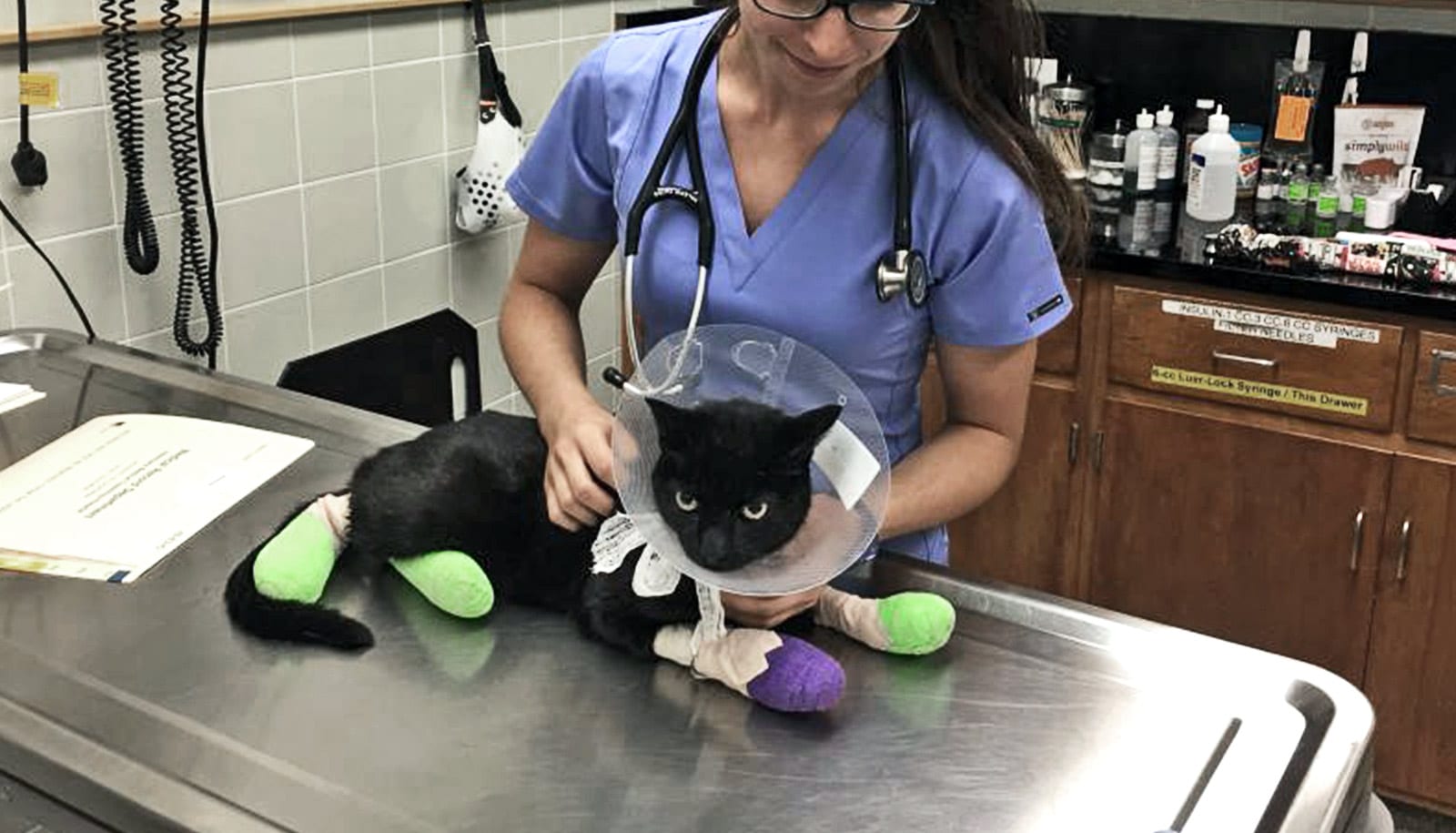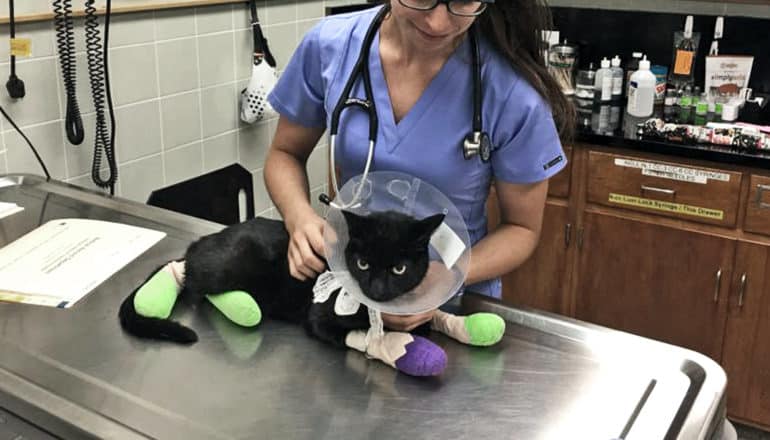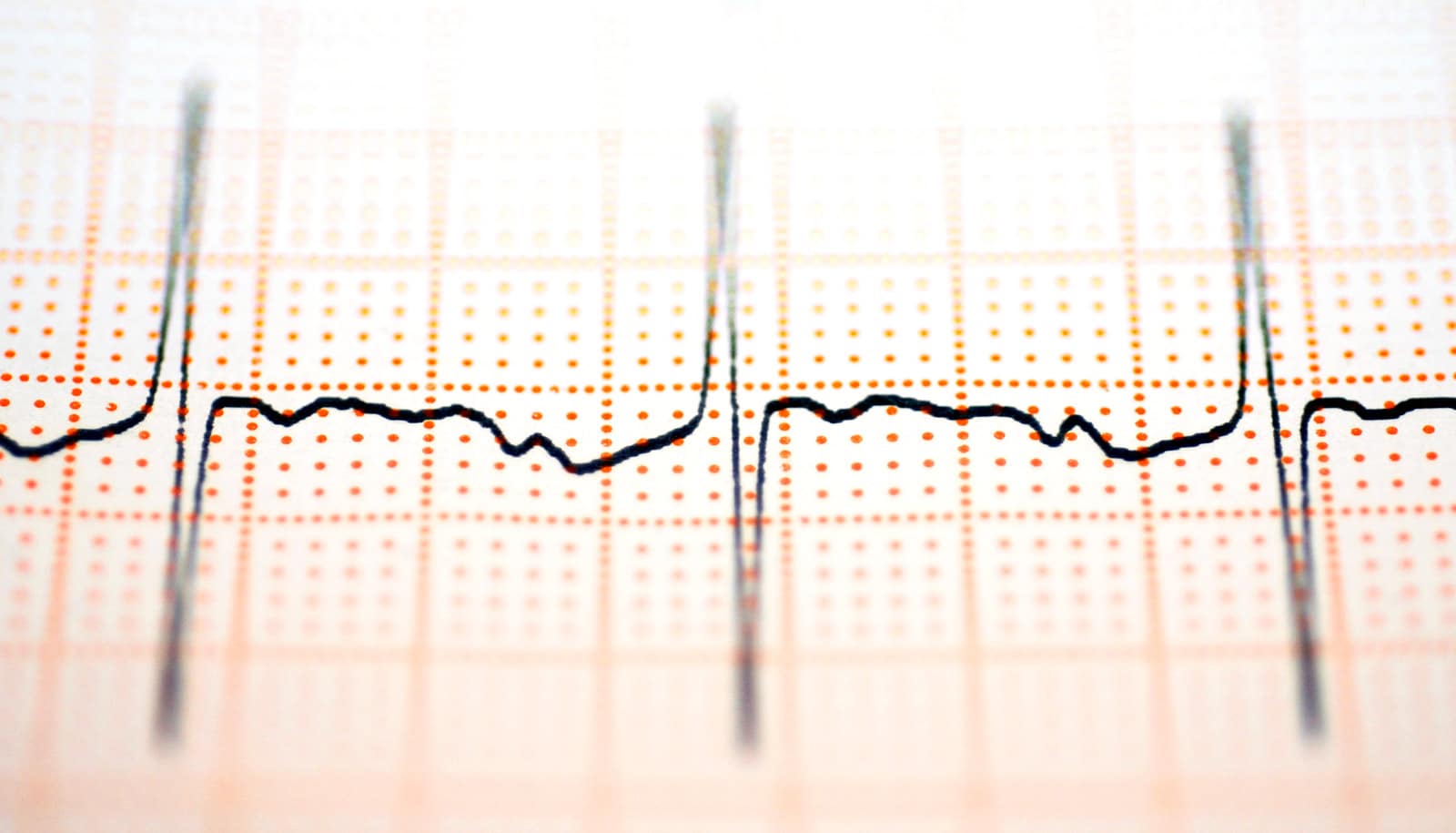
Veterinary student Valerie Fates cares for a cat hospitalized at the UC Davis Veterinary Medical Teaching Hospital during the 2017 Tubbs Fire. (Credit: Rob Warren/UC Davis)
Cats burned in California wildfires also had heart problems
"These cats could be the canary in the coal mine, letting us know what might happen if more people are exposed to these types of wildfires."

Cats who suffered burns and smoke inhalation in recent California wildfires also had a high incidence of heart problems, a new study shows.
Researchers studied 51 cats referred for treatment after the 2017 Tubbs Fire in Santa Rosa and the 2018 Camp Fire in Paradise. Echocardiograms, or heart ultrasounds, showed the cats had significant cardiovascular effects, including a much higher incidence of heart muscle thickening and blood clot formation.
“What was most surprising to us was the vast number of cats that were affected and the severity of their condition,” says lead author Catherine Gunther-Harrington, assistant professor of clinical cardiology at the Veterinary Medical Teaching Hospital at the University of California, Davis.
More than half of the cats had heart muscle thickening and close to 30% had blood clots or were at high risk of developing blood clots. Developing blood clots puts cats at high risk of sudden death. Six of the cats in the study died or were euthanized due to cardiac issues during the course of their care, but 82% survived and were discharged.
What about humans?
People also experience cardiovascular changes after burn injuries. With humans, the more severe and extensive the burn, the higher the risk of cardiovascular changes. In the cats studied, researchers saw higher incidence of cardiac changes than that reported in humans. The changes occurred in cats with moderate and severe burns.
“Many of these cats had moderate burns but had really severe heart changes,” Gunther-Harrington says.
Further research may help scientists understand if the severity of the problem is specific to cats or if this translates to people as well. Understanding the changes observed in cats could lead to a better understanding of the most effective treatment and prevention for both human and feline patients.
“We also know that these cats inhaled smoke in a very urban environment, exposing them to toxicants,” Gunther-Harrington says. “These cats could be the canary in the coal mine, letting us know what might happen if more people are exposed to these types of wildfires.”
Cardiovascular screening after wildfires
The research points to the need for veterinarians to screen for cardiovascular changes in cats as part of their treatment after a wildfire to help reduce cats’ risk of death.
“Most of these cats were able to survive and recover, despite the severity of their condition,” Gunther-Harrington says. “That gives us hope because we know there will likely be more cats in the future injured in wildfires. The more we learn, the better care we can provide for them.”
Coauthor Ronald Li, an assistant professor of emergency and critical care medicine, has continued to study the mechanism responsible for the generation of blood clots in these feline fire victims. As a result of this study, the Li laboratory hopes to document a pathway that points to the most effective drug therapy to treat and prevent blood clots in future feline fire victims.
The study appears in Scientific Reports. The UC Davis Veterinary Catastrophic Need Fund supported the diagnostics and therapeutic management of feline burn victims reported in the study.
Source: UC Davis
The post Cats burned in California wildfires also had heart problems appeared first on Futurity.
Share this article:
This article uses material from the Futurity article, and is licenced under a CC BY-SA 4.0 International License. Images, videos and audio are available under their respective licenses.
Related Articles:
Blood pressure swings may be an early warning for heart disease
Jan. 22, 2020 • futurityMap reveals proteins in heart’s natural pacemaker
July 8, 2019 • futurityLinks/images:
- https://www.futurity.org/robotic-sock-stroke-876752/
- https://www.futurity.org/cats-heart-disease-1329452-2/
- https://doi.org/10.1038/s41598-020-59497-z
- https://www.ucdavis.edu/health/are-cats-canary-coal-mine-wildfire-effects-human-health
- https://www.futurity.org/wildfires-cats-burns-heart-problems-2291222/
- https://www.futurity.org


